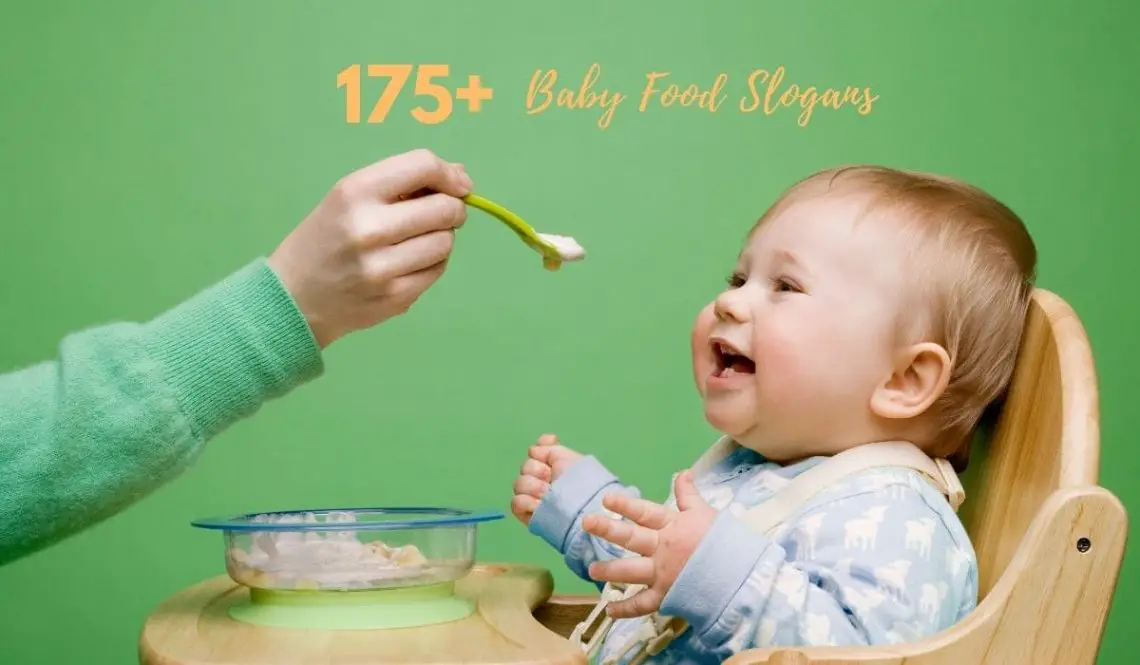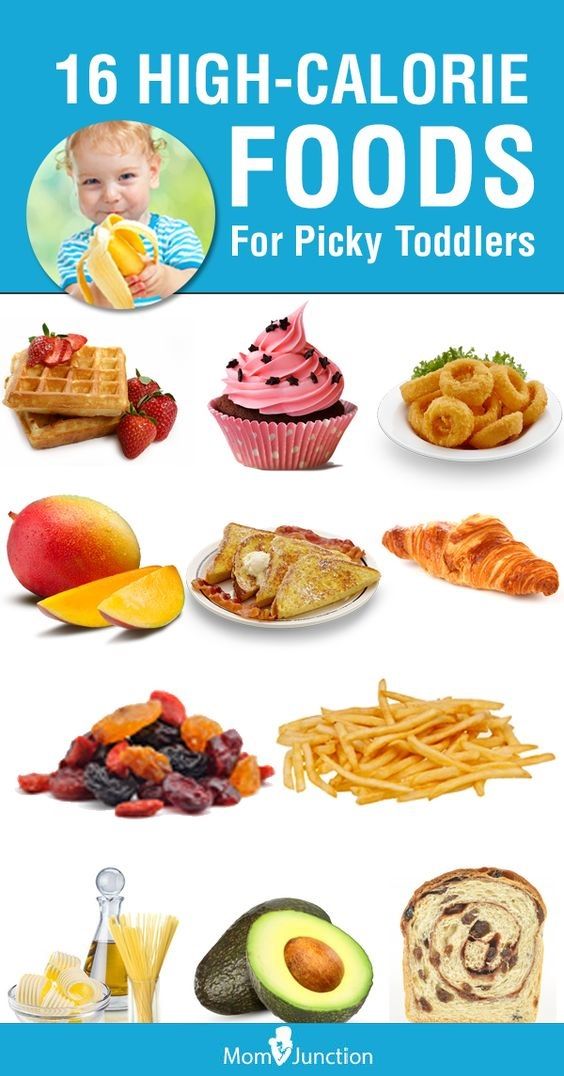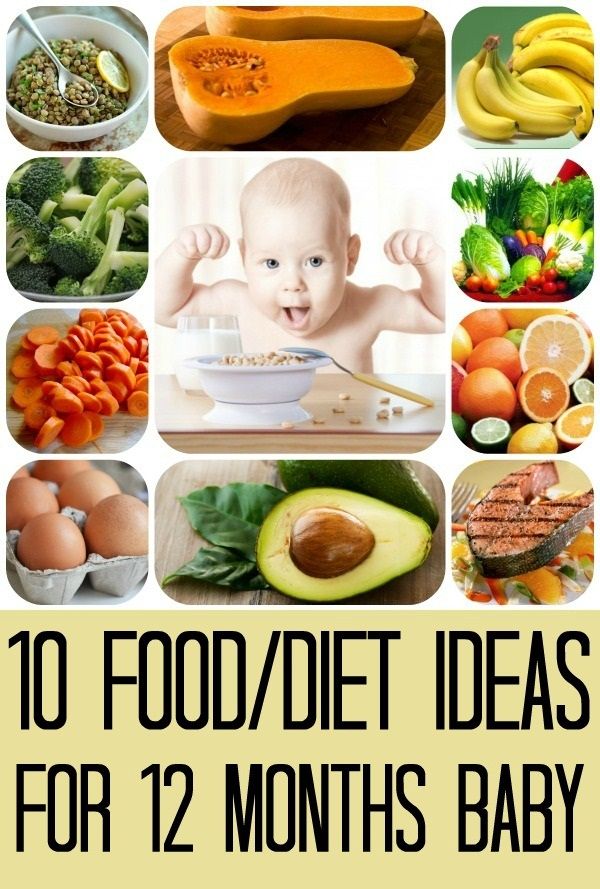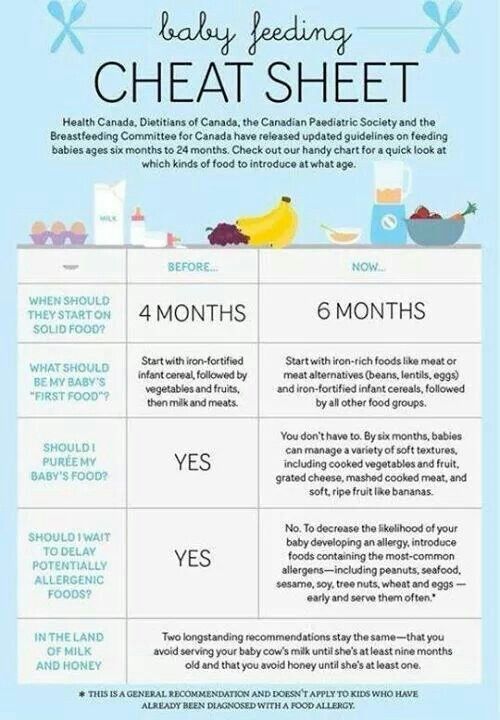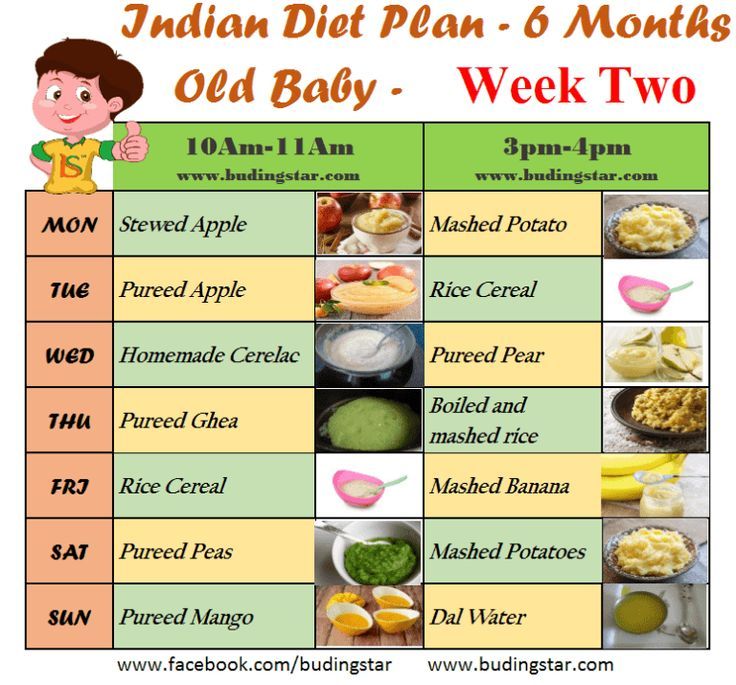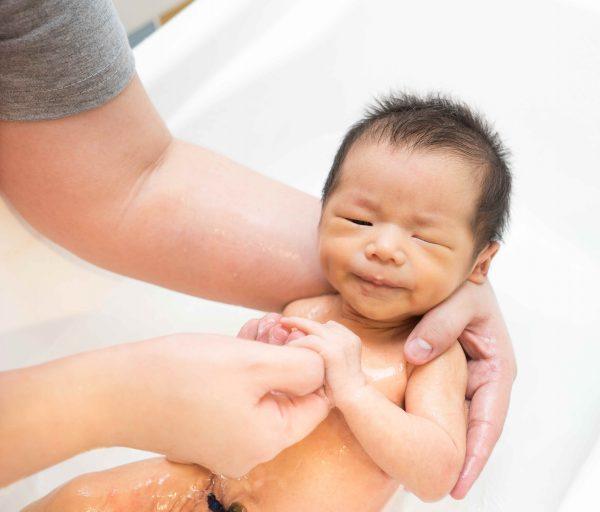Homemade baby pigeon food
What Do Baby Pigeons Eat and How to Feed Them Properly
Pigeons may be seen almost anywhere. Although feral pigeons and wood pigeons are typically in towns and cities, little is known about how their babies appear, and what do baby pigeons eat in case you come across a starving one.
Pigeons or doves are wild birds that feed on a variety of foods. Pigeons, whether wild or farmed, usually have the same diet of seeds, small insects, and reptiles. But what about baby birds? Are their foods different from those of the adult pigeon?
This article will give you the answer by going into details about baby pigeons’ food and some tips on baby pigeon care. Mostly, newborn pigeons’ diet depends on crop milk in the first week and crushed foods with low sugar and salt levels later on. You also have to keep the baby warm and prepare a syringe to feed it.
Table of Contents
- How Does a Baby Pigeons Look?
- What Do They Eat?
- What to Feed a Starving Baby Pigeon?
- 1.
Look for newborn birds formula
- 2. Use non-dairy milk (Macadamia milk prefered)
- 3. Use infant cereal without milk powder
- 1.
- How to Feed Baby Pigeons?
- Conclusion
When newly born, pigeon chicks are generally about 5 centimeters long. Their skin is pink or black with a patchy coating of yellow that will later turn into white feathers. Their beak is typically pinkish, sometimes it can be a deeper hue and their feet are in slate grey.
In comparison with the body, their beak, wings, and feet are relatively larger; however, as the chicks grow older, their bodies will develop more evenly. Baby pigeon eyes’ are closed when they are born and not opened until they are four or five days old.
In general, unless you domestically raise pigeons or manage to wander around a pigeon’s nest, you’ll never get to see the chicks in this condition; nevertheless, this is rare because birds nest in high and remote areas. We usually observe baby pigeons once they hit their juvenile age, which is mostly identical to the adult form.
We usually observe baby pigeons once they hit their juvenile age, which is mostly identical to the adult form.
Newborn pigeons less than four weeks old are called squabs, and they are not yet able to fly.
What Do They Eat?Both of the parent birds provide regurgitated crop milk to their newborn pigeons. Crop milk, often known as pigeon milk, is a secretion of the crop lining (a ‘container’ where pigeons store food until digestion). It also contains a lot of proteins and fats. For the first four days, this is regurgitated to the squabs within two hours after hatching.
They will be given crop milk and seeds for the next 5 days. About nine days after hatching, the baby pigeons will be fed an adult meal. This includes fruits, seeds, and invertebrates on occasion.
The food amount provided to young birds grows by the day, especially when seeds or grains are included. During the first week, both parents must feed two newborns. After that, one adult can usually nurse two squabs.
After one week, squabs will be able to eat a variety of food along with its crop milk. Only during the third week do baby pigeons no longer need crop milk and their metabolism can adapt to adult pigeon food.
What to Feed a Starving Baby Pigeon?If you come across a newborn pigeon on the ground, it is better to just leave it alone. It will usually live better without your intervention; if you believe you know better, you generally don’t. If you do believe that there is a problem with a pigeon, please contact a local wildlife rehabilitation facility in your neighborhood.
On the rare occasion you have to raise the baby bird yourself, you should know what and how to feed it. As you do not have their parents’ crop milk, things are more complicated in the first weeks but let’s see how these following tips may help you.
1. Look for newborn birds formulaYou can check out the two popular formulae: Nutribird A21 or Kaytee Extract. These can be easily purchased from pet stores or online. However, ready-made bird formulae may be rather costly. Your local wildlife rehabilitation team may also be able to assist you if the bird is of a wild species.
These can be easily purchased from pet stores or online. However, ready-made bird formulae may be rather costly. Your local wildlife rehabilitation team may also be able to assist you if the bird is of a wild species.
During the first days, you mix the formula with warm water until it looks like skim milk. Then, you can make it consistent like ketchup after 10 days.
2. Use non-dairy milk (Macadamia milk prefered)If you can’t find any baby bird formula or prefer to make the food on your own, you can try non-dairy substitutes like Macadamia milk and blend it following this recipe from The International Dove Society. You will need:
- 71 grams of chicken baby food
- 1 boiled egg yolk
- 15 grams of low-fat yoghurt
- ¼ teaspoon of corn oil
- ¼ diluted vitamin E
- 2 drops of cod-liver oil
- little pinch of vitamin B
- 25 milligrams of vitamin C
- 247 milligrams of calcium carbonate
Put all the ingredients in the blender and mix them up thoroughly.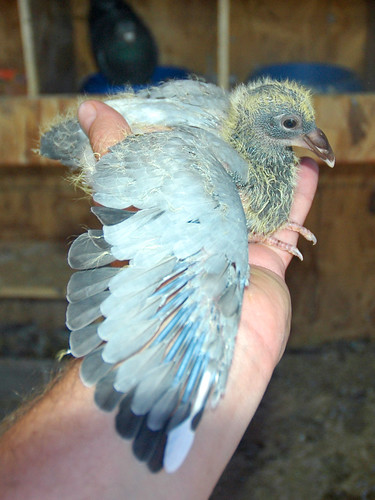 During the first 3 days, you can add a bit of digestive enzymes to the food and wait 30 minutes before feeding the baby. From the second week, you can feed it with seeds, grains, and pigeon foods.
During the first 3 days, you can add a bit of digestive enzymes to the food and wait 30 minutes before feeding the baby. From the second week, you can feed it with seeds, grains, and pigeon foods.
You can use dairy-free baby cereal if you don’t have any options. Mix the cereal with warm water until it reaches skim milk consistency. However, you should only use this if you are in a hurry and the baby is already three to four days old. You should find better alternatives as soon as possible.
Puppy biscuits are another alternative, but they must be soaked in warm water until they are softer.
How to Feed Baby Pigeons?The baby pigeons should be warmed up before feeding. You should put the baby in a box near a 40-watt desk like a reptile bulb. You may also use a low-temperature heating pad or a bottle of hot water but make sure to wrap anything you use in a towel.
When it’s too cold, a newborn pigeon can’t digest the food. Actually, the poor little bird is meant to be brooded over by their parents and kept warm during their first two weeks.
Actually, the poor little bird is meant to be brooded over by their parents and kept warm during their first two weeks.
You should prepare a syringe (with no needle) to pull up the food. First, you need to remove the plunger and wrap the broad end with a self-adhering bandage or dental rubber dam.
Then, use a rubber band to keep it in place and make a hole on it big enough for the baby’s beak. The baby bird will eat from the little hole just like pigeons usually eat from their parents’ mouth. You can gently wipe up any spills on the bird using a warm-water-dipped cotton ear swab.
When the baby is eating, you should keep an eye on its crops to make sure that it consumes enough food. The crop sits directly above the baby’s breastbone and stores food for digestion. If you see the baby regurgitates food, you need to stop because you have overfed it.
Or you can watch for another feeding technique here by AAyan Loft
ConclusionFeeding baby pigeons not only requires knowledge about their special diet but also how to feed them properly. Baby pigeons require adequate nutrition, which primarily includes crop milk. However, you can try alternatives like premade bird meals, the special recipe with MAC milk, or non-dairy infant cereal. Make sure that the food is tender and warm.
I hope you find this article on what do baby pigeons eat helpful, especially when you raise a baby pigeon yourself. If you have any questions or experience with the baby pigeon, feel free to share with us!
Moreover, you also can refer more to other interesting topics of birds:
- Baby mockingbird foods.
- How long can birds go with no food?
- What foods do dodo birds eat?
What Can I Feed Orphan Baby Wild Doves & Pigeons? – Ron Hines' Vetspace – 2nd Chance – The Animal Health Website
Ron Hines DVM PhD
All Of Dr.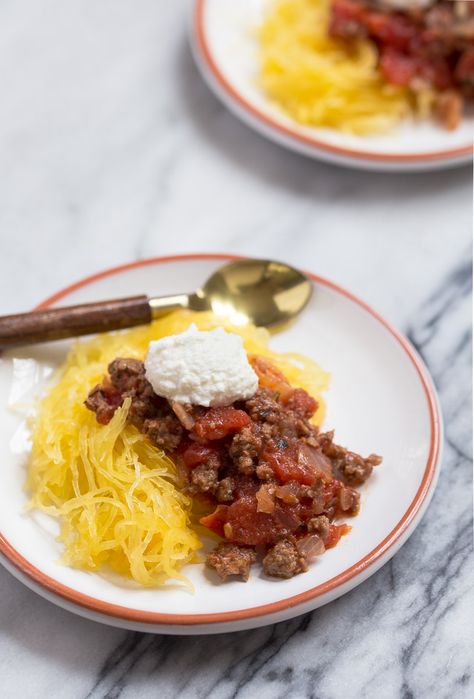 Hines’ Other Wildlife Rehab Articles
Hines’ Other Wildlife Rehab Articles
I love doves – their personality and their graceful beauty. Quite a few have come through my hands over the years. That has been primarily due to their poor nest building abilities. Once a few sticks have been carelessly crossed, doves and pigeons consider the job done.
Doves and pigeons are one of the few groups of birds that you are likely to encounter in the USA, Canada or Europe that require a very specialized diet. While other baby birds are simply present insects and perhaps some of their parent’s adult food by their parents, doves and pigeons (columbine birds) that are raising offspring transform their crop into a “milk” producing organ. Only flamingos, penguins and parrots do something similar. (read here)
Lest you take the word “milk” literally, cow or goat milk is NOT a suitable food for doves or pigeons because they both contain too much lactose sugar (milk sugar) that doves and pigeons cannot digest. This sugar ferments in their digestive tracts causing bloat, diarrhea and respiratory distress that eventually leads to their death.
This sugar ferments in their digestive tracts causing bloat, diarrhea and respiratory distress that eventually leads to their death.
The percentage constituents of dove milk are unknown. But pigeon milk, which is likely to be very similar, is about 70% water. Of the remaining solids in it, about 53-58% is protein and 34-35% is fat. Very little carbohydrates (including sugars) are present. The actual percentages of the contents of the milks of all species of animals never remains constant. It varies over time. Factors like the time of day, the diet consumed by the parents, the number of offspring being fed and the current age of the offspring all factor into its composition. Luckily, the infant animals of all species have been given the flexibility to deal with these variations. Of course, natural pigeon/dove milk also contains all the essential vitamins and trace minerals that the babies require. As the baby doves or pigeons mature, partially digested grains are regurgitated into this mix as well.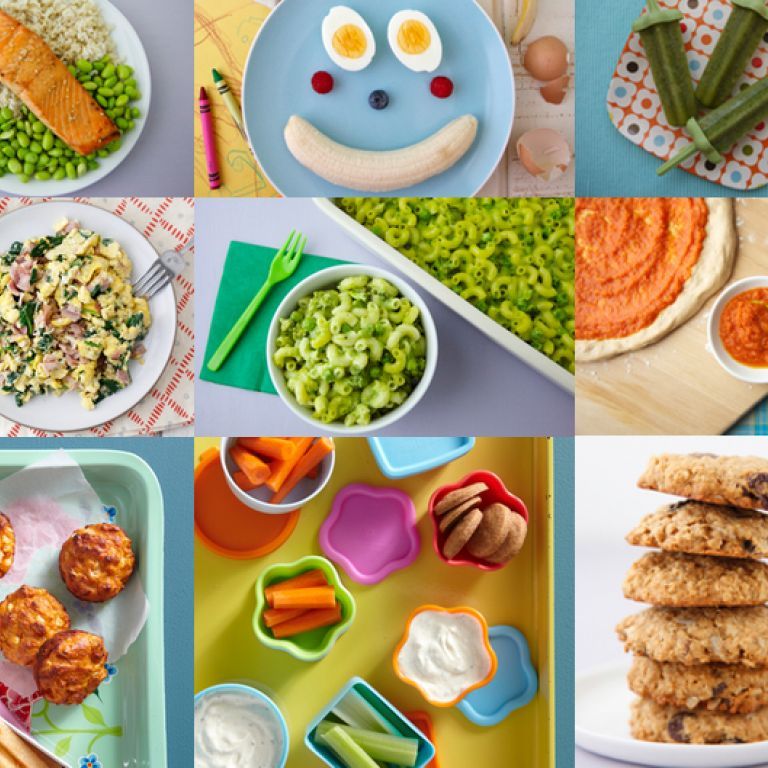
If you have occasion to raise orphan doves or pigeons, there are many recipes that have raised them quite successfully. For fat content, many recipes contain Nutrical® and/or olive or vegetable oils. For protein some contain peas, hemp powder, or vegan soy products. Varying amounts of one or another human or animal vitamin supplement as well as digestive enzymes are often thrown in the pot for good measure. A pinch of this, a smidgen of that – God bless Nature for being so flexible.
One commonly used recipe is called MAC Milk:
Many have found that commercial parrot-raising formulas like Exact® work quite well for doves. Others in Europe use the Psittacus Catalonia Wildiet® formula.
My Technique:Every year I feed out baby doves and pigeons with a recipe I have prepared at home for many years. I chose the ingredients based on what I know about avian nutrition, on products that are are safe, economical and readily available to almost anyone on short notice.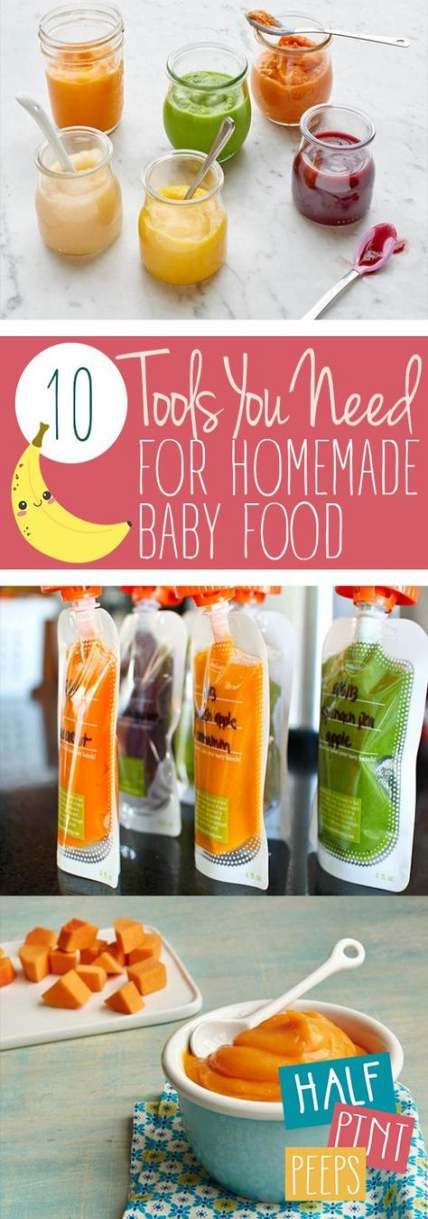 This formula has worked well for me and I hope it will work well for you too:
This formula has worked well for me and I hope it will work well for you too:
1) Pour 1.25 measuring cups of dry instant oatmeal into the empty cup.
2) To the oatmeal, add 1 cup of shaken Silk® unsweetened organic soy milk that has been microwaved for 30 seconds. Unsweetened, non-flavored Silk® milk adds protein and, as importantly, calcium.
3) Mix them together well with a spoon and microwave the mixture for 1 minute or as you would a cup of coffee.
4) Once the oatmeal and soy milk have cooled, add the contents of 2 large whole eggs and mix very well. Never microwave once the eggs have been added because the mixture will become lumpy and unusable. Although raw eggs contain avidin which can inactivate a vitamin, biotin, this has never caused a problem for me when raising doves and pigeons. Dove eggs themselves contain avidin.
As the birds reach maturity, reduced the number of eggs used to one per cup.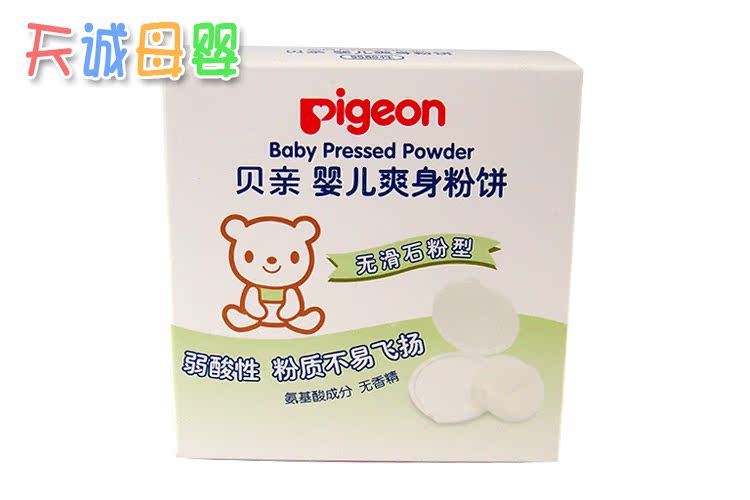 Oatmeal is deficient in Vitamin D3. Egg yolk is a good sources of vitamin D3 and the egg whites are an additional source of balanced protein.
Oatmeal is deficient in Vitamin D3. Egg yolk is a good sources of vitamin D3 and the egg whites are an additional source of balanced protein.
5) Mix well with a spoon until homogeneous.
6) Top off to a comfortable height with Silk® soy milk. Silk® soy milk has a short refrigerator shelf life. When I have only a few doves to feed, I freeze the soy milk in smaller pouches and thaw them as needed.
Let the finished mix sit in your refrigerator for an hour or so until it become smooth and creamy and all small lumps have dissolved. Add a bit more soy milk if it is still too thick or if the babies are very young or if you suspect that they are mildly dehydrated as many fall-from the nest youngsters are. (read here) During the first week, the formula should drip from a syringe. As they get older, you can feed the formula thicker.
Bring your formula to room temp before feeding.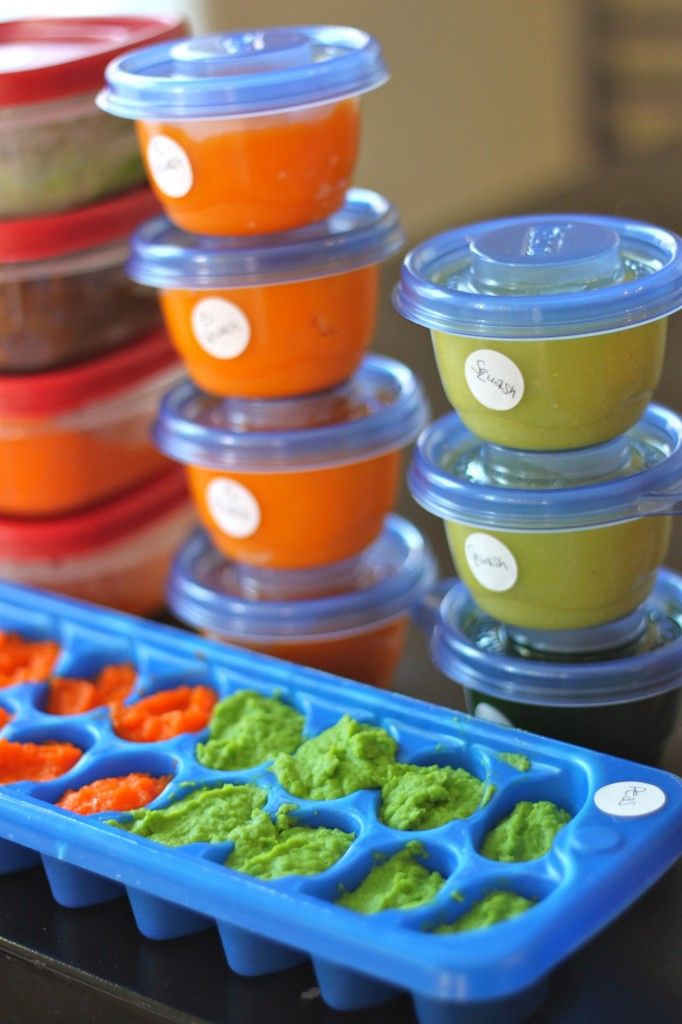
After feeding, the cup goes on the upper shelf of your refrigerator until it is time to bring it to room temperature again for another feeding.
I prepare no more than I will use up over a 48-hour period.
The most common cause of crop burn-throughs is feeding formulas that have been unevenly microwaved and contain hot spots. So, I always stir well after microwaving and after that, place a dab on my wrist to be sure the temperature is safe.
This mixture can be fed to baby doves and pigeons in many ways. I place it in a disposable pipette like the one above which is also seen in view in the topmost photo layouts. With this pipette, I place a bit of formula within the baby’s mouth with the bird allowed to swallow until its crop is moderately full. But never so overfilled and tight that it extends up the neck. If placing your finger against the bird’s neck causes regurgitation, you have given considerably too much at one feeding. Many smaller feeding, spaced throughout the day are always much safer than larger, infrequent feeding. Babies during their first week of life get fed four to five times. That is gradually reduced to three feeding and then to two. When the crop is empty and a little dent has formed at the collar, it is time to feed again. If the crop does not empty completely, you have not waited long enough or there is a health issue. After sundown, there is no need to feed.
Many smaller feeding, spaced throughout the day are always much safer than larger, infrequent feeding. Babies during their first week of life get fed four to five times. That is gradually reduced to three feeding and then to two. When the crop is empty and a little dent has formed at the collar, it is time to feed again. If the crop does not empty completely, you have not waited long enough or there is a health issue. After sundown, there is no need to feed.
Because I usually have a lot of mouths to feed and because baby birds can be messy, I often feed this formula to doves and pigeons using a 3ml disposable syringe and a catheter (tube feed). I cultivate contacts at local hospital supply departments and ask that intravenous catheter extension sets that have passed their FDA-mandated expiration date be set aside for me.
This is what they look like (you can enlarge all my images). You can see one laying next to the scissors in the third photo – before I have cut it to length and another already placed down the squab’s throat. Once your second finger feels the end of the catheter where the bird’s neck enters its body, slowly express the majority of the formula. As I slowly withdraw the catheter, I leave a teaser amount of formula near the rear of the bird’s mouth, so it gets some taste, pleasure and satisfaction out of the procedure. Over the 50+ years I have been tubing baby birds, I do not recall a single case where the tube entered the windpipe rather than the esophagus. Baby birds have a very strong reflex when they gape or feel food in their mouth that locks their larynx shut. So, a gently inserted tube going down wrong is quite unlikely. Nevertheless, watch an experienced aviculturist or wild bird rehabber tube feed before attempting to do so unassisted.
Once your second finger feels the end of the catheter where the bird’s neck enters its body, slowly express the majority of the formula. As I slowly withdraw the catheter, I leave a teaser amount of formula near the rear of the bird’s mouth, so it gets some taste, pleasure and satisfaction out of the procedure. Over the 50+ years I have been tubing baby birds, I do not recall a single case where the tube entered the windpipe rather than the esophagus. Baby birds have a very strong reflex when they gape or feel food in their mouth that locks their larynx shut. So, a gently inserted tube going down wrong is quite unlikely. Nevertheless, watch an experienced aviculturist or wild bird rehabber tube feed before attempting to do so unassisted.
Infant doves are very susceptible to digestive problems and slow crop emptying if they are kept at the wrong temperature. The white wing doves in the photo above are about two and a half days old.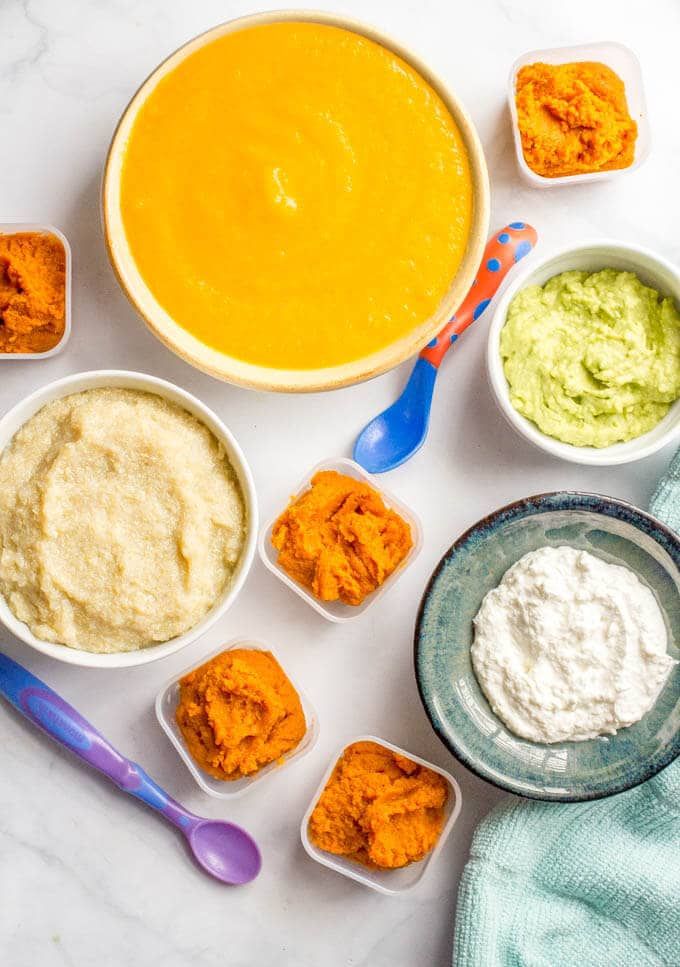 The larger one weighs 27.6 g the smaller one 25.0 g. At that age, their crop emptying time was best when they were maintained at 32 C (89.6 F) with a 100 watt incandescent bulb. At that temperature, these two dovlings took 75-80 breaths per minute. They began to pant and were hot to the touch when their surrounding temperature reached 37 C (98.6 F).
The larger one weighs 27.6 g the smaller one 25.0 g. At that age, their crop emptying time was best when they were maintained at 32 C (89.6 F) with a 100 watt incandescent bulb. At that temperature, these two dovlings took 75-80 breaths per minute. They began to pant and were hot to the touch when their surrounding temperature reached 37 C (98.6 F).
Don’t put pressure on the full or partially full crop or the bird might regurgitate and inhale formula.
Don’t attempt to pass a catheter or pipette unless the bird’s head is in a star gazing position and the neck extended.
Don’t ever attempt to force a catheter or pipette downward that does not pass effortlessly.
Don’t ever attempt to feed a bird that is not bright and alert. They need subcutaneously administered fluids and glucose. You can read about that here.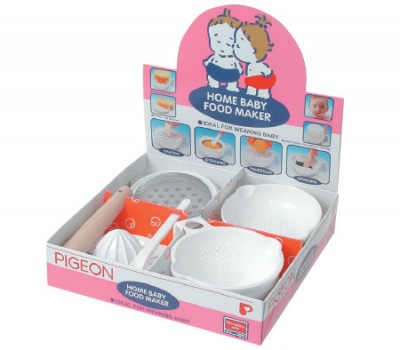
Don’t neglect good sanitation. If it would not pass a health inspector’s muster in a restaurant setting, it’s not a fit in a bird kitchen either.
Don’t develop the habit of always feeding the dove or pigeon from the same side. That predisposes birds to developing scissor beak – a situation where the upper and lower beaks are misaligned. You can enlarge this photo of a hand-fed nightjar that developed this problem:
South Texas summers are quite hot and many of these infants are brought to me from far away. Most are dehydrated. After windy storms that blow them out of their nests and drench them, many are chilled despite the hot weather. Neither dehydrated babies nor chilled babies absorb nutrients well. In those babies, the natural wave like motion (peristalsis) that propels food down their digestive systems function poorly or not at all. Tube feeding babies suffering that condition actually speeds their demise because the formula just putrefies and ferments in their crop.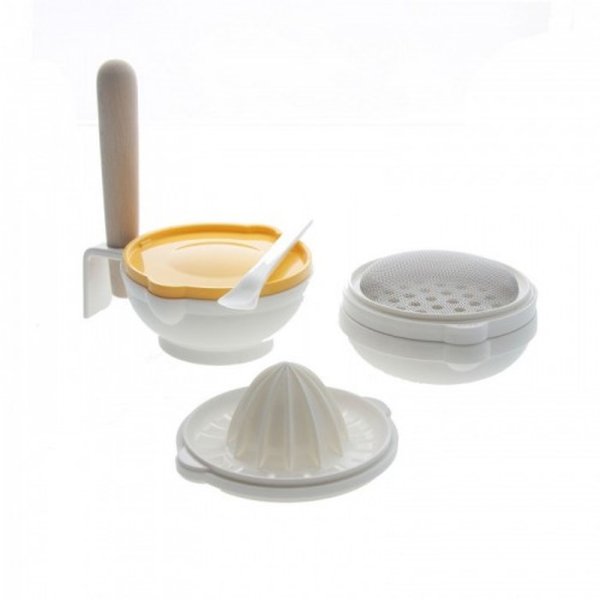 As I already mentioned, markedly dehydrated babies need subcutaneous and intramuscular fluids. (read here) Mildly dehydrated babies need their first few feedings to be no more than warmed lactated ringers solution (LRS). They also need supplemental warmth if they are chilled. All wild creatures are masters at concealing stress, weakness and illness – until the very end. If the circumstances favor dehydration or chilling, just assume they are so, even if it is not outwardly apparent.
As I already mentioned, markedly dehydrated babies need subcutaneous and intramuscular fluids. (read here) Mildly dehydrated babies need their first few feedings to be no more than warmed lactated ringers solution (LRS). They also need supplemental warmth if they are chilled. All wild creatures are masters at concealing stress, weakness and illness – until the very end. If the circumstances favor dehydration or chilling, just assume they are so, even if it is not outwardly apparent.
Once only small tufts of down remain on the head, I begin to place dishes of water and seed grains in the bird’s enclosures. A small rock (or marbles) placed in the water dishes (as seen in the second photo) help keep the birds from turning the water containers over when they perch on them. Since I give them no gravel to line their gizzards (gizzard gravel) at this age, I grind the grain mixture before I offer it to them. You can see the grinder I use in the photo above.
Be sure they are accepting mixed grains before you release them. A quality seed mix suggested for wild songbirds is fine. I add about a quarter amount of game bird (or turkey) starter crumbles to the mix. When whole seeds and grains are offered, I mix a bit of fine stone grit in with their food. The Hartz Gravel’n Grit™ is much too fine and goes right through them. So using well-washed masonry pea gravel from a building supply or river, I first remove the finer sand with a kitchen sieve. Then I remove the larger stones with a kitchen colander (with ~3/16″ holes). Then I wash and re-wash what is left and let it dry. Ground poultry oyster shell sifted in the same way works just as well and provides the birds an additional source of calcium. There is an inset image top right in the 4th photo at the top of this page of the proper size grit for a pigeon. The bird in that photo is already beginning to peck at whole grain.
My wife and I sometimes delay our release of doves beyond what my State allows. We don’t release late summer babies close to the Texas dove hunting season. Others that stay longer are birds that face medical issues and need care. In both cases, I find it wise to supplement a grain-based/seed diet with a small amount of ground dog chow prepared with the meat grinder as seen in the photo.
We don’t release late summer babies close to the Texas dove hunting season. Others that stay longer are birds that face medical issues and need care. In both cases, I find it wise to supplement a grain-based/seed diet with a small amount of ground dog chow prepared with the meat grinder as seen in the photo.
Of all the cereal grains, whole rolled oats are among the most nutritious. It is considerably more so than corn or wheat. Instant baby oatmeal also blends readily with warm water. And because oats are practically gluten-free, the formula is not as sticky as one based on wheat would be. The brand of instant oatmeal that I purchase is pre-fortified with vitamins and calcium that the all infants including doves and pigeons need. Because this product is marketed for children, liability issues dictate that the ingredients be of top quality. Products intended for human consumption are considerably more rigorously monitored for quality than diets intended for animals. For example, the FDA and USDA spend 24 times as much money regulating human versus animal food. Name brand producers like Gerber have the wherewithal to do in depth analyses of their products -batch by batch. That is something that small niche pet food manufacturers generally do not have.
For example, the FDA and USDA spend 24 times as much money regulating human versus animal food. Name brand producers like Gerber have the wherewithal to do in depth analyses of their products -batch by batch. That is something that small niche pet food manufacturers generally do not have.
You will see two brands of baby oatmeal cereal in the second photo at the top. At one time I purchased Parent’s Choice™ because I noticed that it was all whole grain oat flour whereas the Gerber’s was only partially whole grain oat flour. I suppose because of that, the protein content of the Parent’s Choice was listed as significantly higher. But I cannot say that I noticed any difference in how the doves grew up eating one versus the other.
Why Do You Add Raw Eggs To Your Diet?1) Egg increase the formula’s fat/energy as well as its protein content
2) Raw egg albumin (the egg white) also makes my mix very “syringable”.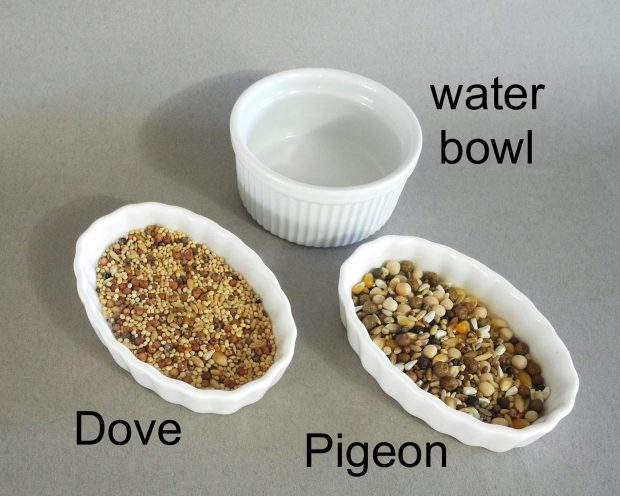 Lumpy diets are hard to force through a standard syringe. The lecithin and albumin in eggs is also an excellent lubricant – so I do not need to use products like KY jelly on the syringe catheter when I am using one. I don’t feed soaked dog or cat chow to doves or pigeons. But when I soak and blend dry kibble to feed or tube other types of wildlife, I have to ream out the tip of the syringe with an 1/8” drill bit held in a vice-grip™ in order to get the slurry to pass through the tip freely.
Lumpy diets are hard to force through a standard syringe. The lecithin and albumin in eggs is also an excellent lubricant – so I do not need to use products like KY jelly on the syringe catheter when I am using one. I don’t feed soaked dog or cat chow to doves or pigeons. But when I soak and blend dry kibble to feed or tube other types of wildlife, I have to ream out the tip of the syringe with an 1/8” drill bit held in a vice-grip™ in order to get the slurry to pass through the tip freely.
3) Like natural pigeon milk, raw eggs contain important vitamins and antioxidants.
4) One of the most important thing that raw eggs contribute and that is lost in heating and cooking are protective antibodies. Most of these egg antibodies are called IgY antibodies. They are found primarily in the egg’s yolk. Although the chick was meant to absorb these antibodies from its yolk before hatching they remain protective in the intestine even when furnished after hatching. These antibodies are not only effective in controlling intestinal bacteria, they are also though to control the growth of C. albicans, the cause of avian thrush or candidiasis. Powdered egg will not do. Its antibodies were lost in processing.
These antibodies are not only effective in controlling intestinal bacteria, they are also though to control the growth of C. albicans, the cause of avian thrush or candidiasis. Powdered egg will not do. Its antibodies were lost in processing.
Once the pigeon or dove hatches, these antibodies – which are also present in the parent’s natural crop milk are still important. But after birth the antibodies are thought to only have the ability to act locally within the squabs intestinal tract. Their molecules are too large to pass through the squab’s intestinal lining intact. Their presence there is still quite beneficial. It is not only the egg yolk that contains protective qualities – the whites do too (lysozymes).
Well, isn’t there a danger in feeding raw eggs?Yes, but the risk is small. One out of 10 – 20,000 commercially produced eggs in the United States tests positive for salmonella. That risk can, perhaps be reduced even further by buying free-range chicken eggs. (read here)
(read here)
Pasteurized, whole egg are perhaps another option. But I do not know if IgY antibodies survive the pasteurization processes used. If that processed did not take the egg contents to over 60 degrees C (140 F) for ten minutes, these antibodies should have survived intact. (read here) I am still waiting to hear back from Davidson they never answered my email.
What About The Lack of vitamin A In Eggs and Oats?It is true that you will not find any vitamin A listed on oat cereal labels and a single large egg has only about one tenth a human’s suggested daily vitamin A intake. But both egg yolk and oatmeal are rich in carotenoids that avian bodies have the ability to convert into active vitamin A (retinol). (read here) A source of either vitamin A or carotenoids are very important in maintaining a strong defense against infections and maintaining healthy skin and feathers.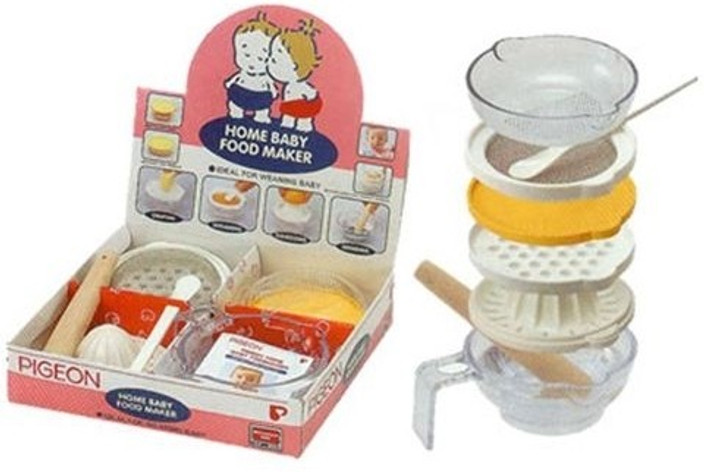
Although some egg producers darken their egg yolks with artificial feed additives, more often darker orange/yellow yolks are a sign of higher carotenoid content. When given the opportunity, pick eggs with the deepest orange yolks. It is always safer to provide carotenoids than it is to supplement with vitamin A from things like cod liver oil or bird vitamin tonics. That is because too much vitamin A is toxic. (read here)
What Are Feather Stress Bars?During the period that a bird’s feather is forming under its skin, the follicle that is producing the feather relies on a steady stream of protein building blocks obtained from the bird’s blood stream (the amino acids needed to build feathers including β-keratin). If that steady flow of amino acids are interrupted – by a lack of appropriate food, a disinclination to eat or starvation – the feather will no longer develop normally because the bird can no longer produce the keratin proteins required to form the feather. When those nutrients again reach the proper level in its blood stream, feather development returns to normal. So, a careful examination of a bird’s feathers gives you a look back into its past. In this particular dove in the two photos above, I or one of my volunteers apparently missed a scheduled feeding while the feather I am pointing to was developing. That resulted in the narrow white line – like a scissor cut – present to the right of my finger. Each incident of low blood amino acids causes a discrete line. You can see that the integrity and strength of of the feather shaft was compromised at that point. With time, that feather will break at both points. You can view a more idealized image of stress bars here and read a bit more about the problem and feathers in general here.
When those nutrients again reach the proper level in its blood stream, feather development returns to normal. So, a careful examination of a bird’s feathers gives you a look back into its past. In this particular dove in the two photos above, I or one of my volunteers apparently missed a scheduled feeding while the feather I am pointing to was developing. That resulted in the narrow white line – like a scissor cut – present to the right of my finger. Each incident of low blood amino acids causes a discrete line. You can see that the integrity and strength of of the feather shaft was compromised at that point. With time, that feather will break at both points. You can view a more idealized image of stress bars here and read a bit more about the problem and feathers in general here.
Some wildlife rehabilitators and aviculturists associate deformed legs and feet (such as in this deformed white Turkish dove) with insufficient calcium in the diet during their growth period. I have never seen bone or joint problems or flexible bones in pigeons, doves or parrots fed this formula, so I believe that its calcium content is adequate. 8 grams of oatmeal contains about 4 mg of calcium and a 100 gm chicken pullet requires about 130 mg of calcium per day. The soy milk I use is also calcium-fortified.
I have never seen bone or joint problems or flexible bones in pigeons, doves or parrots fed this formula, so I believe that its calcium content is adequate. 8 grams of oatmeal contains about 4 mg of calcium and a 100 gm chicken pullet requires about 130 mg of calcium per day. The soy milk I use is also calcium-fortified.
When twisted or bowed foot or leg problems occur, it is more likely that they were caused by too smooth or too flat a cage floor. When a baby bird stands on a floor that is basically flat, its toenails will begin to curve sideways and exert a small twisting force to the toes. With time, like a tree branch, the toes will twist to accommodate that force. Eventually, the pad of the foot will not rest flat against the floor either. Those sort of problems can be prevented by furnishing the infant with a slightly indented twig mat similar to the mat that forms the coarse floor of a dove’s natural nest. I use a shallow plastic dessert bowl to maintain my artificial nest’s shape.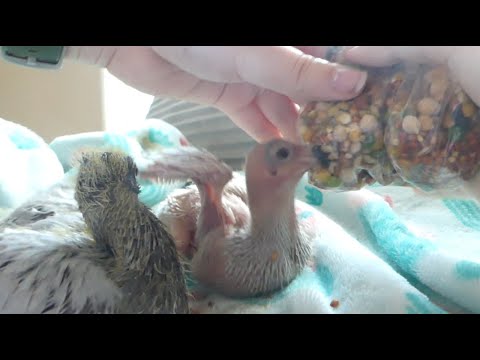 Paper towels or Kleenex™ will not do. They slip and slide. As the bird grows, twigs should always be available that exceed the diameter of the bird’s clenched toes. You can read more about the problem, spraddle leg here.
Paper towels or Kleenex™ will not do. They slip and slide. As the bird grows, twigs should always be available that exceed the diameter of the bird’s clenched toes. You can read more about the problem, spraddle leg here.
I live in the tropical Rio Grande Valley of Texas. Although some mourning doves are brought to me, more often they are tropical white-winged doves or tiny Inca doves.
You are on the Vetspace animal health website
Visiting the products that you see displayed on this website help pay the cost of keeping these articles on the Internet.
What do pigeons eat and what is the best way to feed birds on the street and at home
Pigeon is a specific bird. She is not tamed. If you still decide to keep it at home, take care of the minimum necessary care. First of all, find out what pigeons eat.
Contents
- Diet of street birds
- What to feed pets
- Feeding pigeons: video
Diet of street birds
Many types of food that people are used to feeding pigeons in the square are not really. Most street dwellers die due to pathologies of the gastrointestinal tract. The average lifespan of birds on pasture is 2-5 years. Nature measured the bird at a maximum of about 20 years. Pigeon natural diet:
- greens;
- seeds;
- insects.
The peculiarity of the species is to settle in the city. Pigeons eat what is more accessible: food waste from garbage containers or food poured by humans. Birds are unpretentious. It is almost impossible to find greens with a full range of vitamins and minerals in the city. There is an opinion that it is better not to feed the pigeons yourself. Otherwise, follow the recommendations:
- Bread and other flour products slowly kill pigeons. Crumbs or large pieces suppress appetite without bringing energy value.
 They negatively affect the internal organs of pigeons.
They negatively affect the internal organs of pigeons. - Salt and complex fats from roasted seeds are also harmful to birds.
- Choose natural grains for feeding. On sale there are cheap varieties of cereals. Ideally, pigeons are given special food from a pet store, which contains all the trace elements the bird needs.
- Avoid spoiled, moldy, or expired food.
Attention! Black bread is especially dangerous for birds. It causes fermentation in the stomach. The risk of intestinal volvulus increases. Chips, coconut flakes, salty crackers-snacks are categorically harmful.
Chicks on the street should not be touched at all, let alone fed. Parents themselves will give food (milk). They will be wary of the appearance of a person. Adults may even leave the nest with their offspring if they feel your presence.
What to feed pets
Domestic thoroughbred pigeons feed on a different principle. With such breeding, the basis of their diet is grain:
- 40% of the daily norm - barley;
- 10% - millet;
- other grains - corn, sunflower, wheat, legumes.
The share of barley is sometimes changed to pearl barley.
Pigeons eat little: per day - 20-30 g (light breeds) or 30-50 g (large varieties). 70-80% is the share of cereals. In warm weather, fresh vitamin mixtures from chopped nettle, lettuce, sorrel, alfalfa, spinach, and cabbage are added to the feed.
Other useful mineral supplements - crushed eggshells, shells, red brick crumbs, charcoal.
Nutritional standards are adjusted depending on the activity of pigeons. If the dovecote is open, the birds are constantly flying, then they need more food. For the same reason, portions are reduced in winter.
Birds still need a moderate amount of salt. It is served in dissolved form - 20 g / l. Pets will drink as much as they need. Just make sure you have free access to water.
Birds require improved nutrition during lay, moult or breeding season. Give the birds healthy and tasty food: peas, lentils, vetch, oatmeal (groats), shelled oats. Monitor the feeders and constantly update their contents. Grass for feeding collect on clean, tested lawns or grow in a pot.
Pigeons are fed three times a day in summer. Birds that fly freely are given small portions of food as supplementary food. In the cold season, natural pastures are inaccessible to them. Feathers are transferred to 2-time enhanced nutrition. Consider replacing vitamins from fresh grass for a second, evening feeding.
Keeping such pets is not considered difficult. Take care of the food that pigeons eat to prolong their life in any conditions.
Pigeon feeding video
What to feed domestic pigeons and what to feed street birds
Do you want to know how to feed pigeons at home or what you can feed street pigeons?
- Nutrition Basics
- spring-summer diet
- Autumn-winter diet
- Useful Supplements
- harmful products
- Basic Rules
- Nutrition of young animals
- What can you feed street pigeons
- If doves dreamed
The menu of poultry must be different from that of pigeons in the wild. The right diet, which includes useful trace elements and vitamins, will help grow healthy birds.
The issue of feeding worries not only breeders who keep them on the farm. There is also interest among all those who like to treat them near the shops! In order not to harm the health of birds, you need to familiarize yourself with the permitted and prohibited foods for the diet.
Nutrition basics
Cereals and grass are important feeds for poultry. They help birds develop and maintain good health. It is necessary to determine the right amount of each type of food for the warm and cold seasons.
Spring-summer diet
Spring-autumn is characterized by active reproduction of birds and subsequent rearing of young animals. At this time, it is important to choose food enriched with vitamins and minerals. You need protein. This will improve health and reproductive function. The birds will be active and will raise strong young.
Sample diet for an adult:
- barley - 20%;
- wheat - 20%;
- peas - 20%;
- vetch - 10%;
- corn - 10%;
- oats - 10%;
- millet - 10%.
Greens are added to the menu additionally. It doesn't need to be limited. The juicy grass contains many useful vitamins.
What else do birds eat (except grain and grass)? You can treat them with delicious barley and millet. Before feeding, the cereal must be carefully processed. Millet must be thoroughly washed and boiled. Barley can be given both dry and boiled. But it is better to pre-clean from possible debris. It is not advisable to abuse such feeds, this can lead to blockage of the esophagus.
Now you know how to feed a pigeon at home during the warm season.
Autumn-winter diet
In cold weather, the composition of feed for birds needs to be revised. In order to reduce egg production at the wrong time, it is necessary to reduce protein foods. To do this, legumes are almost completely removed from the bird's menu. Instead, it is recommended to give oats and barley.
If you don't know what to feed your pigeons in winter, then be sure to try making a special nutrient mixture. It will require potatoes and cereals boiled in salted water. Grind the root crop and mix with grain.
Winter diet:
- oats - 40%;
- barley - 40%;
- corn - 10%;
- lentils - 10%.
In addition, we give rapeseed and flax seeds, they help to keep the softness and elasticity of the feathers. The daily norm for an adult is 3-4 grams.
Feed requirements and storage considerations
Feeding requires high quality ingredients. They must meet the requirements, they must be strictly observed. Make sure they are:
- dry;
- do not contain harmful impurities and dirt;
- do not have traces of mold and mildew.
Food should be stored in a well-ventilated area to prevent mold and spoilage. They should be well protected from rodents and various parasites.
Healthy Supplements
You can use ready-made formulas enriched with minerals and vitamins necessary for life. When self-compiling a combined feed, yeast, granulated sugar and grain waste should be added to the cereal mass.
Substances useful for pigeons:
- red clay;
- lime;
- fish oil;
- sulfur;
- charcoal;
- cumin seeds.
It is not necessary to give each substance to birds daily. Supplements alternate and combine with each other.
Harmful products
Absolutely not to be given to pigeons:
- Products with a high oil content. The liver of birds is not adapted to the digestion of heavy fatty foods. Seeds are limited.
- Sweets. This food is heavy and can clog the gastrointestinal tract.
- Citrus. The digestive system is not ready to process fruits that are not traditional for our latitudes.
- Meat.
Such heavy food can provoke death.
- Fish. Pigeons cannot digest and absorb large amounts of phosphorus.
- Dairy products. There are few bacteria in the gastrointestinal tract of birds that help digest such food.
- Black bread. This product causes fermentation. If you did not know until this moment whether it is possible to feed pigeons with bread, then be sure to take note of the ban on rye products.
Basic Rules
In spring and summer, three meals a day should be organized with an interval of 7-8 hours. In winter, food should be given only 2 times a day - in the morning and in the evening.
Young Animal Feeding
It is important to know how to feed a pigeon chick at home. Ideal food for young animals are special mixtures consisting of various components.
The optimal ratio of ingredients for young animals is as follows:
- millet - 20%;
- barley - 20%;
- wheat - 20%;
- peas - 10%;
- corn - 10%
- oats - 10%;
- vetch - 10%.
The daily norm of the mixture for chicks is 40 grams. In autumn and winter, grown-up young animals are fed the same way as adults. Do not forget that chicks need additional vitamin and mineral supplements.
Toddlers are separated from adults to provide the younger generation with enhanced nutrition. Feeding three times a day. Portions should be plentiful, especially in the evening.
Young pigeons prefer wheat and are indifferent to legumes. To benefit the chicks, the grain should be moistened with Trivit or fish oil. We reduce the amount of wheat when the chicks learn to fly.
What can you feed street pigeons
The biological age of wild pigeons is 12-15 years. But in urban environments, birds rarely live that long. The average life expectancy is 6 years. This is explained by an inadequate diet. Harmful food and lack of vitamins lead to a gradual deterioration in the health of birds.
Many people sincerely believe that street birds love bread. Children and adults feed wild pigeons with crumbled rolls or seeds. But few people know for sure how to feed them on the street, so as not to harm them.
Light bread is poorly digested and absorbed by the body, and eating rye products in general leads to fermentation in the stomach. Seeds are good in reasonable quantities. The ideal option is grains and cereals. Seeds can only be given unroasted.
Before feeding, check that the food variant will not cause harm. Even if you are not a breeder, be sure to check out the list of foods that are allowed for feeding.
Take a handful of barley with you for a walk! Birds will definitely be happy with such a tasty and healthy treat.
Dreaming of pigeons
Do you know that treating them in a dream is a good sign? A dream book about how to feed pigeons suggests that favorable changes await a person in life. Different interpreters of dreams agree on one thing - such a dream promises something good.
Miller is sure that feeding birds in a dream means well-being in family life.


